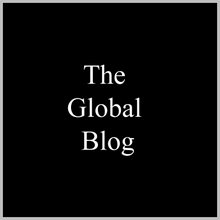Cuban Missle Crisis
The world had never been closer to an apocalyptic end than in 1962, the time when “Nuclear catastrophe was hanging by a thread ... and we weren't counting days or hours, but minutes.” Like other catastrophic events in history, this crisis did not begin without a prelude of quick motions on the state of the world. When World War II ended, the world was left in shock and awe: the most deadly weapon to grace human existence was manifested in America, and used almost insignificantly on Hiroshima and Nagasaki in Japan. Thereafter, the world trembled. However, not all the fear-stricken nations were completely powerless. The Soviet Union, allied with the Americans during the war, had achieved the same as their former allies: the production of their own nuclear bomb. Now with these two countries placed at the highest pedestals in the world, both competed with each other to surpass the other. The rest of the world could do little but watch. Western Europe, fearing the unparalleled force of the Soviet’s, created an organization with America to insure its security. The Soviets did likewise, forming an alliance with its adjuvant nations. The bitter tension between America and the Soviets bore holes into the psyche of its members and citizens, giving the signature name to this period in history, the Cold War. Consequently, in the early 1960’s the Cold War had almost exploded into a full-scale war, one which could destroy whole nations. It could have been the first nuclear war.
The center of the crisis was Cuba. Having just recovered from an overthrowing of the government, its new leader (dictator actually, Fidel Castro, issued numerous changes to the way of life in Cuba. Though from a reading standpoint most of these reforms seemed beneficial to the people, there were a select few that left the Caribbean island and into Florida, in the U.S. When the press heard of the stories told by the immigrants, America took a stand against their close neighbor. This led to the Americans deciding on an invasion of Cuba. The attempt to bypass the shores of Cuba, in the famed battle, the Bay of Pigs, was a complete failure. Castro theorized that a successive attack would not entirely out of the question. To protect his nation, he sought the help of Khrushchev, the Soviet Leader, who made an offer to install ICBMS (Inter-continental Ballistic Missiles) onto the island. The plan was that the missiles would remove any thought of invasion from U.S. The plan was soon carried out in mid-1962, setting the steps that would bring the Cold War to its highest peak.
The day was October 15th, 1962. A U-2 spy plane (nicknamed the Dragon Lady), a one man plane developed by the United States in 1957, hovered over Cuban airspace, which was a normal practice. However, a striking set of recon photographs revealed that Cuba had something going on without there noticing, until now. The aerial photos revealed a hive of missile bases planted across the borders of the island, and a few inland. However, this was not entirely new news. A recon photograph taken on September 4th, 1962, revealed that missile bases were being constructed in Cuba; however, they were non-offensive missiles. Twelve days later on September 16th, more U-2 revelations showed that materials, equipment, and missiles were being ported to Cuba for the construction of bases. It was becoming obvious then that there was a threat coming, but it wasn’t until the 15th of October that it was confirmed the Soviet missiles were present in Cuba.
This terrifying news was not revealed to the president until the next day at 9 a.m. He immediately assembled a group of his most trusted advisers. This group was named the Executive Committee of National Security Council, or ExComm for short. They and President Kennedy developed three ways to try to halt the crisis, but seven days after the news of the missiles, the one decide on by the members was posing a blockade on Cuba, which was less likely to start any all out conflict. It was on this seventh day that it was revealed to the public that Cuba had nuclear ICBMs, which could cause unparalleled destruction in the states. Kennedy declared to the Soviet Union that a launch of any of the missiles would be labeled an attack on America, so he demanded that the Soviets withdraw their nuclear weapons from Cuba. On October 27th, a U-2 plane was shot down over Cuba. ExComm received two letters from Khrushchev that day. One negotiated that if they were to remove their ballistic missiles from Cuba, America would remove their missiles from Turkey. The other negotiated that if America were to promise not to invade Cuba, they would dismantle their missiles. Kennedy, after heavy discussion, took the latter. However on October 28th, the Soviets removed their missiles, despite that they chose to follow the second letter. The Americans complied with the Soviets, also retracting their missiles in Turkey.
The Cuban Missile Crisis was definitely the highest peak of the Cold War. Millions of people’s lives teetered on the edge of death. Any mistake or misconception in negotiation could have marked the end of two great nations. For a week, the world rested on the shoulders of the leaders of the two most powerful nations in the world at the time, the US, and the USSR. Then, the people became notified on this catastrophe seven days after the conflict started, just when the tension began to burst the world apart. Can you imagine the fear these people had to face for the week that followed? Where would we be had these leaders not reached a “peaceful” settlement on the crisis?


No comments:
Post a Comment